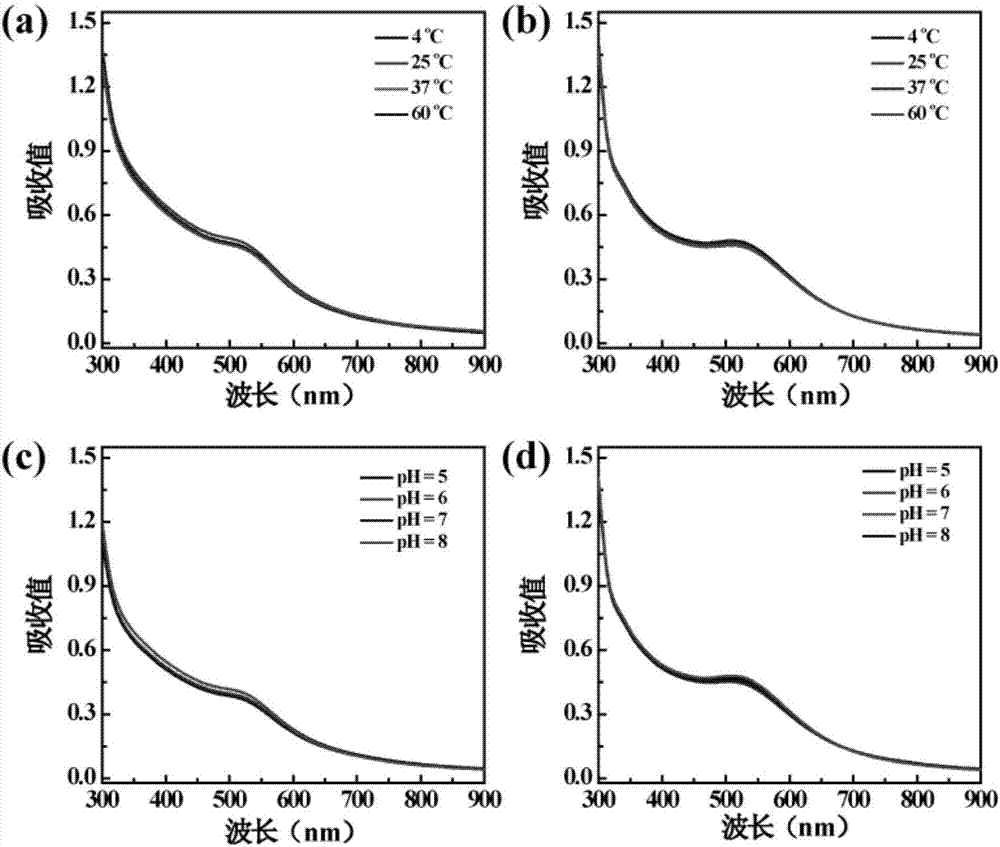Preparation method of SPECT/CT (Single Photon Emission Computed Tomography/Computed Tomography) dual-mode imaging contrast agent based on second-generation polyamide-amine dendritic polymer
An amine dendritic macromolecule, dual-mode imaging technology, applied in general/multifunctional contrast agents, preparation of X-ray contrast agents, preparations for in vivo tests, etc., can solve the problems of undiscovered preparation and application, and achieve Good SPECT/CT imaging effect, mild reaction conditions, and improved biocompatibility
- Summary
- Abstract
- Description
- Claims
- Application Information
AI Technical Summary
Problems solved by technology
Method used
Image
Examples
Embodiment 1
[0039] (1) 20.0 mg of the second generation polyamidoamine dendrimers (G2.NH 2 ) was dissolved in 3.0mL DMSO, and 3.0mL radionuclide was added dropwise 99m The dimethyl sulfoxide solution (5.5 mg / mL) of the Tc chelating agent NOTA was stirred and reacted at room temperature for 24 hours, and the dialysis bag with a molecular weight cut-off of 1000 was used for dialysis for 3 days (2 L of distilled water was used for each dialysis, and the water was changed 9 times) ), and G2-NOTA was obtained after freeze-drying. 1 The H NMR test results show that the chemical shift peaks at 2.3-3.2ppm and 3.3-3.4ppm in the spectrum correspond to G2.NH respectively 2 and NOTA characteristic peaks. Calculated from the integral area, each G2.NH 2 The surface is modified with about 3.1 NOTA ( figure 1 a).
[0040] (2) Mix 26.9mg polypeptide RGD and 65mg COOH-PEG-MAL in DMSO solution, stir and react for 24 hours to obtain COOH-PEG-MAL, and dialyze with a dialysis bag with a molecular weight ...
Embodiment 2
[0045] Material Stability Test Results
[0046] Take the aqueous solution (0.4 mg / mL) of the product obtained in (4) in Example 1, place it at different temperatures for 0.5 hours, measure its ultraviolet spectrum, and determine the stability of the product at different temperatures. In addition, the aqueous solution (0.4mg / mL) of the product obtained in (4) in Example 1 is prepared into a solution with a pH of 5-8 with acetic acid-sodium acetate buffer solution and PBS buffer solution respectively, and its ultraviolet spectrum is measured to determine that the product is in Stability at different pH. The results show that: in image 3 It can be seen that the G2-NOTA-PEG-RGD@Au( image 3 a and 3c) and the control material G2-NOTA-mPEG@Au ( image 3 b and 3d) Nanoparticles have a characteristic absorption peak at 500-550nm, and within a certain temperature (4°C-60°C) and pH (5-8) range, the absorption peak does not shift significantly, which shows that the present invention ...
Embodiment 3
[0048] Get the product obtained in (4) in Example 1 and use distilled water as a solvent to prepare a mother solution with a gold concentration of 0.04M. Afterwards, 0.02, 0.01 and 0.005M samples were serially diluted. At the same time, taking iohexol for clinical use as the control material and adding distilled water to dilute samples with corresponding iodine concentrations, and CT imaging tests were performed on the two groups of materials respectively. The test results show that the G2-NOTA-PEG-RGD@Au particles prepared in the present invention have better CT imaging effects than the traditional contrast agent iohexol ( Figure 5 a) and X-ray attenuation coefficient ( Figure 5 b), indicating that it has good potential CT imaging capabilities.
PUM
| Property | Measurement | Unit |
|---|---|---|
| The average particle size | aaaaa | aaaaa |
Abstract
Description
Claims
Application Information
 Login to View More
Login to View More - R&D
- Intellectual Property
- Life Sciences
- Materials
- Tech Scout
- Unparalleled Data Quality
- Higher Quality Content
- 60% Fewer Hallucinations
Browse by: Latest US Patents, China's latest patents, Technical Efficacy Thesaurus, Application Domain, Technology Topic, Popular Technical Reports.
© 2025 PatSnap. All rights reserved.Legal|Privacy policy|Modern Slavery Act Transparency Statement|Sitemap|About US| Contact US: help@patsnap.com



